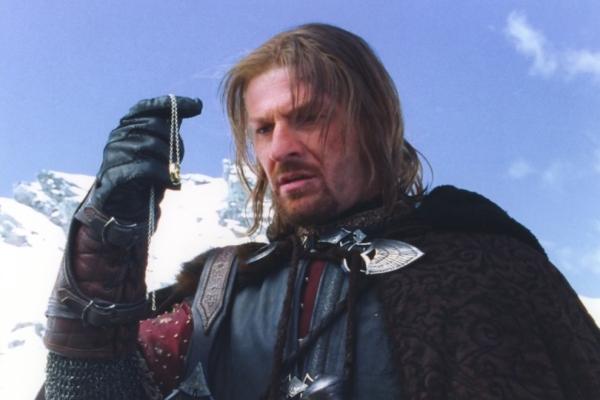A musical about Tammy Faye Messner, more widely known by her former name, Tammy Faye Bakker, seems odd at first. But the Broadway stage feels like the right place for the rise and fall of televangelism to play out. Televangelism, after all, is meant to be a spectacle. And its shadow of corruption, sex, and money only add to the theatrics of it all.
Tammy Faye is a new musical that debuted on Broadway on Nov. 14. On opening night, I made my way to the newly refurbished Palace Theater, a large crowd already gathered outside. “This is all for Tammy Faye,” a passerby remarked in awe.
The musical is an homage to Faye, full of enough glamor and mascara to match her personna. Directed by Rupert Goold, with music by Elton John and lyrics by Jake Shears, the show is a kind of love letter.
John felt that Tammy Faye’s story deserved new light, telling The Hollywood Reporter, “She was full of life, joy and forgiveness, and so I was always incredibly fascinated by her.”
The play opens with Faye (Katie Brayben) sick from colon cancer, reflecting on her life as her condition worsens. “You wait your whole life to be in God’s glorious presence and suddenly there you are in his waiting room waiting for him to buzz you in,” she says.
As she looks back, we catch a glimpse into the revival tent where she first meets stalwart Billy Graham (Mark Evans), her future husband Jim Bakker (Christian Borle), and some of the earliest American televangelists, like Jerry Falwell (Michael Cerveris), Jimmy Swaggart (Ian Lassiter), and Pat Robertson (Andy Taylor).
In this Broadway theater, the audience becomes a congregation. “Welcome to the age of the electric church,” the actors sing. We hear from the televangelists, learning their own definitions of what it means to be the church. “The light of the world is ours for the taking,” they sing. In the revival tent, everyone makes plans for their own take on televangelism.
In stark contrast to these gray-clad, power-hungry men, we meet Bakker and Faye, pastel-wearing, puppet-wielding preachers who want to share a message of love. “All those fire and brimstone preachers? That’s not the Jesus I know,” Jim says.
So they start preaching on their show, The PTL Club, and their audience grows, mainly through their television congregation’s captivation with Faye.
“We put the fun in Christian fundamentalism,” Jim says. Their show features segments like cooking, makeovers, and, of course, puppeteering. Faye sings and shares spirit-filled messages that are often silly and full of unintentional innuendos about God: “He’s inside women and he’s inside men,” she says.
The show features appearances from Pope John Paul II (Taylor), Archbishop of Canterbury Robert Runcie (Lassiter), and Latter-day Saints president Thomas S. Monson (Max Gordon Moore). The three conspire together about what to make of Faye and televangelism. “The Electric Church is a spiritually vacuous abomination,” Runcie says.
“God wants me to be pretty and strong,” Faye says. Her mascara is her own kind of armor of God in the face of men who wrong her. In the musical, as in real life, the many men who know Faye find her too loud, too flashy, too much. But where their version of the gospel leaves out many people from the family of God, Faye says, “We welcome everyone to the show.” She wraps her arms around those who are called “deviants, radicals, and outcasts,” becoming a beloved icon for the LGBTQ+ community.
Here, Falwell and his compatriots use Faye as an example. They plot Bakker and Faye’s downfall to open up airspace for their own schemes, schemes that include securing Ronald Reagan’s presidency. “I’ve been called by my creator to make my country greater,” Falwell sings. The golden age of televangelism paved the way for Christian nationalism, the show argues.
Faye also committed her fair share of transgressions. Somewhere along the way, alongside Bakker, she became entrenched in trickle-down prosperity gospel antics. They lived extravagant lifestyles and racked up debt. They asked the poorest of their audience to donate to Heritage USA, their floundering attempt to build “Christian” Disney World.
In the end, Faye owns up to her sins, singing, “Help me to be the woman I say I am.”
The show was well-received during its stint on London’s West End, but just five days after its stateside Broadway debut, it was announced that Tammy Faye would be closing on December 8 due to low ticket sales and mixed reviews. True of her own life, audience members weren’t quite sure what to make of Tammy Faye.
Though Tammy Faye’s Broadway run will be unexpectedly short-lived, its namesake’s message remains the same. “Love more than hate. That’s it. That’s all I’ve got,” she says.
“Light is mentioned way more times in the Bible than darkness, forgiveness more than vengeance. And love? Love is mentioned so much, 489 times, in fact. Do you know what’s mentioned only 89 times? Hate.”
In her brief but dazzling Broadway run, Tammy Faye blinks back at us through her mascara tears, reminding us to love.
Got something to say about what you're reading? We value your feedback!






